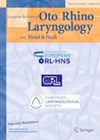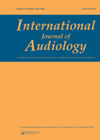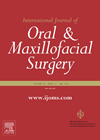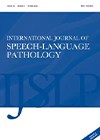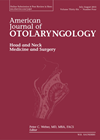
Journal Reviews archive for 2024
Organoids in otolaryngology
This interesting review article summarises the status as well as future prospects of organoid technology in our field. Organoids are a mass of cells which are typically cultured in vitro with 3D technology. They simulate miniature tissues and organs and...
Audiologists’ perspectives on their ability to address hearing, social and emotional adult patient needs
Authors suggest there is little evidence that hearing technology addresses patients’ emotional concerns related to their lived experience of hearing and communication difficulty. The study explores the notion of audiologic counselling and discusses the role of audiologists in supporting the...
Helmets make a difference in bicycle injuries
This is a meta-analysis of maxillofacial injuries arising from riding a bicycle. The incidence of maxillofacial fractures in cycling accidents varies from 3-20% and, whilst the effectiveness of helmets in preventing traumatic brain injuries is well known, their protective effect...
How much does it cost to simulate speech and language therapy placements?
The Royal College of Speech and Language Therapists report that 20% of speech and language therapy positions are unfilled in the UK. Consequently, there is an urgent need to offer as many training courses as possible to fill these gaps....
A systematic review of adjunctive probiotic therapy in the management of chronic rhinosinusitis
It is generally understood that administering substances containing live microbiologically active micro-organisms (probiotics) enhances the treatment of chronic rhinosinusitis. Probiotics manipulate and rebalance the alterations occurring in the local microbiome in chronic rhinosinusitis patients. This results in propagation of healthy...
When you regret an implant!
Cochlear implants (CIs) offer a solution to hearing loss not helped by conventional hearing aids. CIs help in improving speech recognition scores. While significant, it is not sufficient to provide satisfaction in some implantees. Alignment between expectations and realistic outcomes...
The push towards scarless parotid surgery
When dealing with benign parotid pathology, high expectations are placed on the operating surgeon to preserve key neurovascular structures, especially the animating facial nerve, through meticulous dissection. With time, there has been a greater emphasis on improving cosmesis in parotid...
Mondini dysplasia and cochlear implantation
Approximately 20-28% of sensorineural hearing loss in children arises due to a cochlear malformation. Mondini dysplasia includes a cochlear with one and a half turns and an incomplete interscalar septum. Cochlear implantation is a common treatment protocol for children with...
Pre-habilitation in head and neck cancer – a literature review to guide best practice
Curative treatment of head and neck cancer (HNC) often requires surgery; however, outcomes are impacted by the complexity of the surgery and the patient population. Increasingly ‘Enhanced Recovery After Surgery’ (ERAS) protocols are being used to maximise patient outcomes and...
Parkinson’s humour: recognising social communication difficulties
Parkinson’s results in a progressive motor disease with symptoms including tremor, rigidity and bradykinesia. However, people with Parkinson’s also experience non-motor symptoms such as cognitive difficulties that can impact social communication, often due to their co-existing speech difficulties, auditory and...
Nasal septoplasty: is it more effective than medical management?
Question1. How do we know that undertaking an operation will benefit a patient? Question 2. How do policy makers / health systems know an operation is effective and ‘good value for money’? As trained professionals, we spend our careers seeking...
Active surveillance for papillary thyroid cancers – what is the risk of progression?
Papillary thyroid cancers (PTCs) are generally considered to be indolent malignancies with favourable outcomes. Active surveillance (AS) has consequently been trialled as a management option for small PTCs with no evidence of regional lymph node involvement, especially papillary thyroid microcarcinomas...

